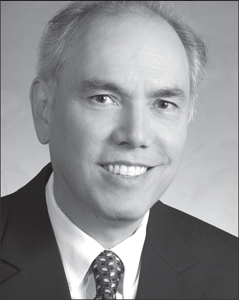ELI 50th Anniversary Building on the past to secure the future, after half a century of leadership on law, policy, and management
In September 1969, 50 lawyers, practitioners, and academics from across the country convened at Airlie House, just outside Warrenton, Virginia. This watershed event led directly to the establishment of the Environmental Law Institute and the Environmental Law Reporter to collect and analyze developments in the newly created field.
ELI was incorporated on December 22, 1969, as a §501(c)(3) organization, the same day that Congress passed the National Environmental Policy Act. The fledgling Institute held its first educational program in late 1970 and released the first issue of ELR the following year.
Half a century later, ELI has grown into the leading environmental law think tank, offering an objective and nonpartisan perspective through its top-tier research, educational programs, and publications.
Throughout this anniversary year, ELI will look back at its history and the sharing of environmental progress with its valued community members and diverse array of supporters. The Institute is hosting special programming and events throughout the year. Each month will focus on a key issue within ELI’s work portfolio over the last five decades. This programming began in January with programs on pollution, a focal point of ELI’s work through the years, and will end in December with a focus on environmental assessment, which occurs the same month ELI and NEPA were formed in 1969.
In keeping with its January theme, programming that month featured pollution prevention and re-thinking waste. To reduce islands of plastic waste in oceans and polluted air in cities, ELI explored ways for stakeholders to consider alternatives to the traditional linear model of resource use.
The Institute hosted a panel discussion and webinar highlighting different ways to transform the traditional “take, make, and dispose” economic model into a circular economy, even when lower costs of production processes and materials have been an obstacle to such a transformation. Moderated by Michael Goo of AJW and the Circular Economy Industries Association, panelists discussed the many obstacles and benefits of fostering a production system that recoups its waste as feedstock, and whether emerging new technologies and business models can be viable in such a resource format.
In addition to moderator Goo, expert panelists included Michael Burger, executive director of the Sabin Center for Climate Change Law; Paul Hagen, principal at Beveridge & Diamond PC; Stewart Leeth, vice president of regulatory affairs and chief sustainability officer of Smithfield Foods; and Meagan Weiland, an independent researcher at Economic & Human Dimensions Research Associates and program coordinator for Science magazine.
An additional webinar in January focused on the new and innovative methods of recycling undesired material. Moderated by ELI Senior Attorney James McElfish, director of the Sustainable Land Use Program, the panel discussed ways to encourage cities, wastewater treatment plants, corporations, and other important players to improve recycling processes, especially as the number of different types of recyclable materials increases. Interestingly, this issue also creates new business opportunities for the industrial and commercial sector to explore.
ELI’s anniversary celebration will continue throughout the year. Special programming in March will focus on re-imagining environmental governance, and April will feature the role of law in climate response and energy transformation.
In the latter half of the year, stay tuned as ELI looks forward to featuring topics including wetlands protection, technology as an emerging driver for environmental behaviors and conditions, and gender and the environment.
Institute launches podcast series to reach out to constituencies
In January, ELI launched its new People Places Planet Podcast. The series will provide a platform for Institute staff and leadership to discuss their work covering a range of environmental topics, as well as emerging developments in environmental law both domestically and internationally.
The podcast enables ELI to remain a thought-leader of environmental law and governance in the 21st century. It is a means to communicate the Institute’s cutting-edge, and thought-provoking, insights in a new medium to our growing international audience.
The inaugural episode hosts a discussion between ELI President Scott Fulton and Director of the Technology, Innovation, and the Environment Project David Rejeski on their co-written ELR Comment, “A New Environmentalism: The Need for a Total Strategy for Environmental Protection,” which was featured in the September ELR.
Fulton and Rejeski guide listeners through their theoretical framework, discuss why they focused on this topic at this time, and consider how their framework could be applied to environmental policymaking.
Rejeski remarks that despite the cluster of progress in environmental protection during the late 20th century, moving the agenda forward now requires asking questions about the four emerging drivers of the environmental protection movement: law, risk management, technology, and community.
Fulton and Rejeski urge environmental policymakers to continue to think about how these drivers will interact with the development of new technology, big data, and private environmental governance.
Identifying these drivers is just the first step; Fulton and Rejeski reflect that there are many remaining issues to pursue in the future, which raise a host of questions.
To what extent can these new drivers compensate for government failure or inability to act? How does the fast pace of technology interact within the slower changing, legacy law and policy systems, and how might one design the interface between them?
These questions are certainly important for the future of environmental protection. People Places Planet will continue to move these types of conversations forward.
Podcasts are available for download on the ELI website or from your favorite podcast app.
Deep cuts in carbon emissions require workable legal pathways
ELI was involved in producing two landmark publications in early 2019. The First Global Report on Environmental Rule of Law and the full version of Legal Pathways to Deep Decarbonization (a summary version of which was released last year) address the pressing issues of worldwide environmental protection and avenues for progress in the coming decades.
Over the past two years, ELI engaged with UN Environment to develop the first report. Environmental rule of law is critical for worldwide sustainable economic and social development, protects public health, contributes to peace and security by avoiding and defusing conflict, and protects human and constitutional rights.
UN Environment released the report to offer frameworks to address the gap between environmental laws on the books — and what is actually in practice — for countries around the world. The report is available for free download on the ELI web page.
In addition, the full version of Legal Pathways to Deep Decarbonization will be released in March 2019. The book equips policymakers and practitioners with over 1,000 recommendations for legal pathways to reduce U.S. greenhouse gas emissions by at least 80 percent from 1990 levels by 2050.
Edited by Michael Gerrard, professor at Columbia Law School, and John Dernbach, professor at Widener University Commonwealth Law School, the book is based on two reports by the Deep Decarbonization Pathways Project. The project discusses the technical and policy pathways for dramatically reducing greenhouse gas emissions. The carbon abatement goals are often referred to as deep decarbonization, a charted pathway that requires systemic changes to the energy economy.
Deep decarbonization is achievable in the United States using laws that exist or could be enacted. These legal tools can be employed with significant economic, social, environmental, and national security benefits. The book provides legal and policymaking leaders the means to begin implementing these tools to tackle emissions reductions in the coming years.
Field Notes: Profession loses two leaders in enviro protection
ELI has learned with great sadness of the passing of two giants in the implementation of environmental law. Both were integral to the Institute’s mission, offered great knowledge and wisdom, and were important members of the ELI community.
❧
Douglas Keare passed away on January 8 at 84 years old. He was an important member of the ELI family as part of the Leadership Council, and in shaping and supporting the ELI-Miriam Hamilton Keare Policy Forum each year.
The annual policy forum honors his mother, a noted environmentalist, and focuses on bringing key stakeholders together to discuss the most urgent environmental issues and advance solutions. Keare was an important thought leader for the forum due to his avid interest in the topics. He often pitched interesting ideas for discussions in the planning stage and asked the resulting panel engaging questions during the annual event.
Keare received his B.A. from Dartmouth College and a Ph.D. in economics from Princeton University. His career and passions were shaped around his belief in the power of cities to spark progress and secure the future.
Keare was the first head of the World Bank unit responsible for urban research and policy and led it for 25 years. He also held important positions in Malaysia and East Pakistan (Bangladesh) with the bank.
Keare also was involved in work for the Harvard Institute for International Development and the Lincoln Institute for Land Policy. He retired in Boston, Massachusetts, at which point he became a generous donor and involved with ELI’s research and program activities.
❧
Judge Patricia Gowan Wald died in January at age 90. Wald received the ELI Environmental Achievement Award in 2000 for her central role in creating modern environmental jurisprudence during her long tenure on the United States Court of Appeals for the District of Columbia Circuit, including five years as chief judge.
After retirement from that position, she served as an international jurist in The Hague on the tribunal adjudicating war crimes in the former Yugoslavia.
Her legacy remains in her legal and environmental work and in her determination to pave the way for women in the legal profession.
In her award acceptance speech, Wald discussed the intersection of concerns she addressed over domestic environmental statutes and those in international criminal cases. She emphasized that ultimately, quality of life depends on peaceful and non-destructive relationships with one another, and harmony with the environment.
Wald graduated from Yale University Law School in 1951. She began her legal career as the only female law clerk in the Second Circuit. During the Carter administration, she served as the assistant attorney general for legislative affairs at the Justice Department, and soon after was nominated as the fourth woman on the D.C. Court.
Although the 1970s was the primary period for passing landmark statutes, Wald’s position in the D.C. circuit court during the 1980s allowed her to make a lasting impact on how to interpret and apply the statutes passed by Congress. Her opinion in Sierra Club v. Costle in 1981, upholding EPA emission standards for coal-burning power plants, quickly grew to be a frequently cited opinion to support presidential rulemaking.
Her lifetime of achievement was honored by Barack Obama in 2013, when she received the Presidential Medal of Freedom.
❧
ELI continues its work in China through environmental training workshops at universities in Beijing. In January, over one hundred NGO workers, judges, prosecutors, and public interest lawyers attended ELI’s workshop at Renmin University, taught by ELI Vice President John Pendergrass and Visiting Scholar Leslie Carothers.
ELI teamed with Latham & Watkins and the Policy Research Center for Environment and Economy to hold the second Chinese International Business Dialogue on Environmental Governance roundtable on January 15 in Beijing. Launched last year, the dialogue is a working group designed to facilitate discussion between multinational businesses and Chinese authorities regarding best practices in government and industry in the area of environmental regulation, as well as the forward movement of environmental protection in China.





